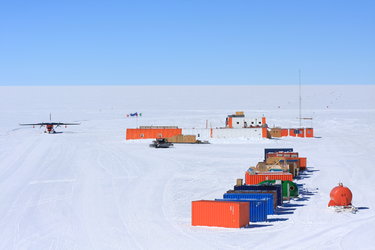Accept all cookies Accept only essential cookies See our Cookie Notice

About ESA
The European Space Agency (ESA) is Europe’s gateway to space. Its mission is to shape the development of Europe’s space capability and ensure that investment in space continues to deliver benefits to the citizens of Europe and the world.
Highlights
ESA - United space in Europe
This is ESA ESA facts Member States & Cooperating States Funding Director General Top management For Member State Delegations European vision European Space Policy ESA & EU Space Councils Responsibility & Sustainability Annual Report Calendar of meetings Corporate newsEstablishments & sites
ESA Headquarters ESA ESTEC ESA ESOC ESA ESRIN ESA EAC ESA ESAC Europe's Spaceport ESA ESEC ESA ECSAT Brussels Office Washington OfficeWorking with ESA
Business with ESA ESA Commercialisation Gateway Law at ESA Careers Cyber resilience at ESA IT at ESA Newsroom Partnerships Merchandising Licence Education Open Space Innovation Platform Integrity and Reporting Administrative Tribunal Health and SafetyMore about ESA
History ESA Historical Archives Exhibitions Publications Art & Culture ESA Merchandise Kids Diversity ESA Brand Centre ESA ChampionsSpace in Member States
Find out more about space activities in our 23 Member States, and understand how ESA works together with their national agencies, institutions and organisations.
Science & Exploration
Exploring our Solar System and unlocking the secrets of the Universe
Go to topicAstronauts
Missions
Juice Euclid Webb Solar Orbiter BepiColombo Gaia ExoMars Cheops Exoplanet missions More missionsActivities
International Space Station Orion service module Gateway Concordia Caves & Pangaea BenefitsLatest
Space Safety
Protecting life and infrastructure on Earth and in orbit
Go to topicAsteroids
Asteroids and Planetary Defence Asteroid danger explained Flyeye telescope: asteroid detection Hera mission: asteroid deflection Near-Earth Object Coordination CentreSpace junk
About space debris Space debris by the numbers Space Environment Report In space refuelling, refurbishing and removingSafety from space
Clean Space ecodesign Zero Debris Technologies Space for Earth Supporting Sustainable DevelopmentApplications
Using space to benefit citizens and meet future challenges on Earth
Go to topicObserving the Earth
Observing the Earth Future EO Copernicus Meteorology Space for our climate Satellite missionsCommercialisation
ESA Commercialisation Gateway Open Space Innovation Platform Business Incubation ESA Space SolutionsLatest
Enabling & Support
Making space accessible and developing the technologies for the future
Go to topicBuilding missions
Space Engineering and Technology Test centre Laboratories Concurrent Design Facility Preparing for the future Shaping the Future Discovery and Preparation Advanced Concepts TeamSpace transportation
Space Transportation Ariane Vega Space Rider Future space transportation Boost! Europe's Spaceport Launches from Europe's Spaceport from 2012Latest

easyJet plane takes off from runway
Thank you for liking
You have already liked this page, you can only like it once!
Commercial air passengers across Europe will soon experience fewer flight delays and greener travel thanks to pilots being able to use satellites to route their planes.
The ESA-backed Iris for aviation system connects pilots digitally to air traffic controllers via satellites, so that flight routes can be optimised. Pilots will be able to fly the most efficient routes, saving time and fuel, while cutting carbon dioxide emissions by up to 10%.
The system has almost completed its certification process with the European Aviation Safety Authority – following which it can be used for pan-European air traffic management – following a commercial deal signed between UK-based satellite communication company Inmarsat, which developed the technology with ESA support and was recently acquired by Viasat, and the European Satellite Services Provider (ESSP), which delivers communication, navigation and surveillance services for aviation.
Under the agreement, the ESSP will interface with more than 30 national air traffic control authorities and manage the completion of certification from the European Aviation Safety Agency.
With large quantities of data relayed to and from the aircraft, the Iris system provides secure, reliable and fast high-bandwidth links between pilots and air traffic controllers. It complements the outdated data communications technology that is used at present and is nearing full capacity in Europe’s congested airspace.
Iris is due to enter commercial and operational service fully in Europe next year, and airlines including easyJet and ITA Airways have already signed up to use the system.
-
CREDIT
ESA -
LICENCE
ESA Standard Licence

MAVinci UAV in operation

Whose Sky Is It?

EGNOS :Safer Air Traffic in Developping Countries

EGNOS: En Afrique atterrisage en toute sÈcuritÈ















 Germany
Germany
 Austria
Austria
 Belgium
Belgium
 Denmark
Denmark
 Spain
Spain
 Estonia
Estonia
 Finland
Finland
 France
France
 Greece
Greece
 Hungary
Hungary
 Ireland
Ireland
 Italy
Italy
 Luxembourg
Luxembourg
 Norway
Norway
 The Netherlands
The Netherlands
 Poland
Poland
 Portugal
Portugal
 Czechia
Czechia
 Romania
Romania
 United Kingdom
United Kingdom
 Slovenia
Slovenia
 Sweden
Sweden
 Switzerland
Switzerland
























